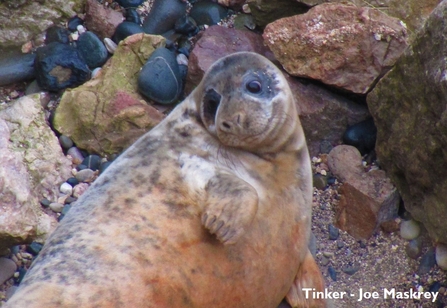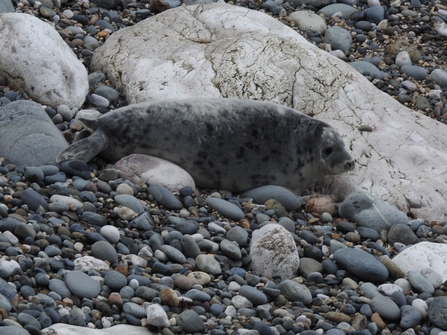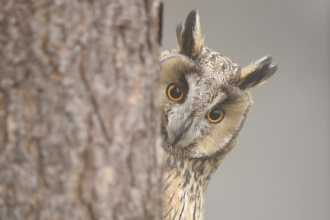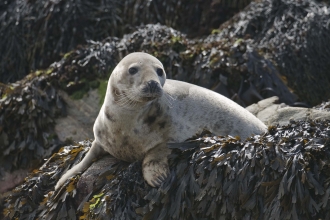Moulting in seals removes the fur layers and replaces them. This ensures the fur of the seal is in top condition. Seals undergo this process once a year during this season. Grey seals have 2 fur layers which is dense and waterproof. Fur is important as it keeps the seal warm by trapping a layer of air between the hair and the skin. This is important due to extreme temperature drops during the winter months.
Grey Seal - Moulting season
Getting crowded ©Anna Griffiths
Seal moutling around face ©Paul Board
There are three stages to moulting in seals. The first stage is the early moult. Areas such as the face will have a loss of patterning and small areas will have hair loss. The second stage is referred to as the middle moult. During this time, larger areas of fur are being shed which reveals darker hair underneath. The last stage is a fully moulted seal. There are no signs of the previous hair, and the seal has a shiny coat. The moulting process requires a vast amount of energy. Seals will increase the blood supply to the skin during this time. However, this process is energetically costly, so they will spend the time moulting on land to conserve energy and fasting (not hunting) will provide the seal with the energy to moult.

Moulting patches ©Joe Maskrey
There is a size order to moulting seals. Juveniles will moult first, followed by adult females, then adult males. There is overlap between, but a gradual order is followed. The moult can take up to 6 weeks for each individual seal. During this time the seals become irritable, they are restless and lose weight during this time. Especially for pups, the first moult of the season will be itchy. This itchiness causes restlessness and irritability which can lead to seal being vocal and aggressive. There are a variety of fur colours for grey seals once they have regrown their fur. Males (bulls) will generally be darker than the females (cows) but they all vary from sandy, dark brown, black and white. Once their first white coat is moulted the pups show the spots they have for the rest of their lives. These can be used to identify the seal and the moult will not cause this pattern to change, so seals can be identified (with effort) and also tracked.

Pup's last bits of first moult ©Paul Board
If you are concerned about the welfare of a seal, you can call the following numbers for advice. British Divers Marine Life Rescue (01825 765546) 24 hours or RSPCA (0300 1234 999) 24 hours. It is important to never approach a seal or pup due to disturbance can led to the mother abandoning the seal pup. Additionally, when viewing seals always make sure you are being respectful and keeping noise levels to a minimum. A distance should always be maintained, and dogs should be always kept on leads.
Blog - Molly Jones.



